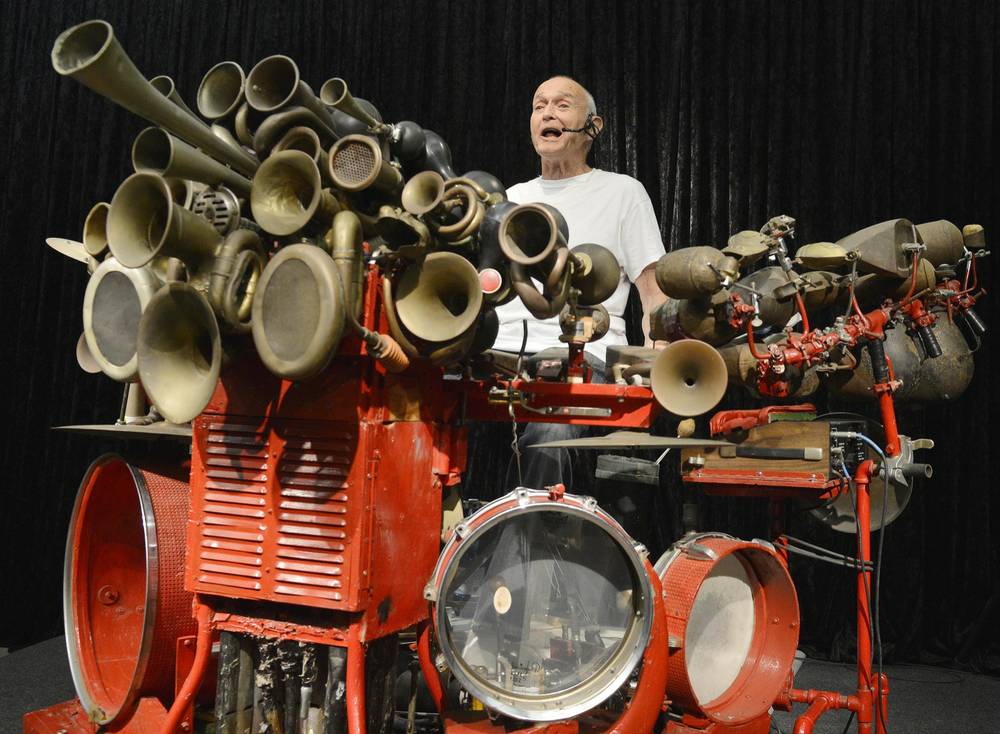The artist talk, an ordained sanction of the art world as I like to think about it, is the equivalent of a concert to the musician who puts out an album in the music world. You made the work, now back it up. As enriching as the experience may be, most of the time you hear a lot about what people are “interested” in and learn very little. So I was delighted and impressed with Llyn Foulkes’ artist talk at UNLV Monday night. Because in the world of “I am/was interested in blah blah blah,” or better known as the first sentence spoken at every artist talk ever, it was absolutely refreshing that Foulkes did not utter those words once. His talk renewed my view of this art world ritual and his oeuvre posited virtue back into art practice.
Foulkes talked about how his life experiences influenced paintings like “St. Vincent,” a piece marked with a swastika made from material from an actual burnt-out school in Los Angeles, a painting influenced by Foulkes’ viewing of the burned buildings in post-war Germany. His early work, with touches of Pop art influence, boosted him to fame at the start of his career in the early ‘60s, earning him a show at the famous Ferus Gallery and placing him among notable emerging West Coast artists like John Baldessari, Robert Irwin and Ed Ruscha.
Foulkes’ work was selling and he was asked to produce more, but he quickly realized he did not want to get stuck in a certain way of working, or as he put it, “sell his soul.” So at the cost of popularity and sales, he stayed true to himself and progressed his work in a different direction—one that he wanted but the art world did not. He began his journey of “trying to save painting.”
Staying true to his personal subject matter, Foulkes began to intricately incorporate raw materials like wood, rocks, and even hair and fetuses into his paintings, pushing the boundaries of traditional painting into the realm of sculpture. He proposed that it was his intention to push his paintings off and back from the surface while maintaining the illusion of flatness, which holds true to the essence of painting. As Foulkes put it when describing his early work, “It’s supposed to be blood, but I see red paint because I’m a painter.” He was now “creating a reality.”
Foulkes comes across as a hero to the virtuous artist. Many people in artistic industries are faced with the moral dilemma of selling out. If a taste of success is experienced, an artist must be bold because change is risk and risk can mean loss. So for Foulkes to be so forthright with the simplicity of his subject matter, the ups and downs of his painting and musical careers, and add the bonus of sharp cultural criticism was a true revelation, reviving the artistic spirit via the artist talk.






